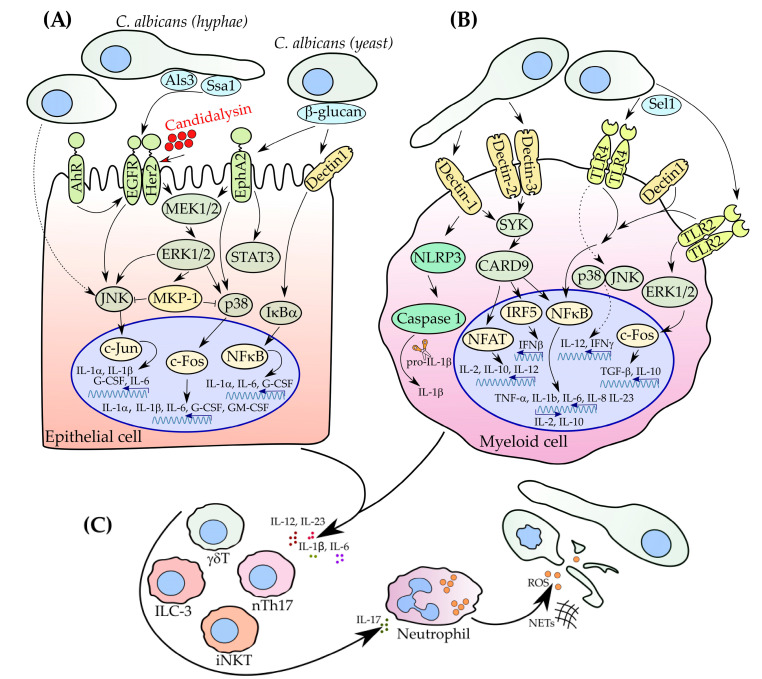Figure 1.
Schematic overview of molecular pathways in response to C. albicans which lead to the interleukin-17 (IL-17)-dependent neutrophil recruitment. (A) Upon C. albicans invasion, epithelial cells recognize fungal pathogen mainly via receptor tyrosine kinases (RTKs) such as epidermal growth factor receptor (EGFR) and human epidermal growth factor receptor 2 (Her2). Phosphorylation events lead to the downstream signaling cascade resulting in the activation of transcription factors and subsequent release of cytokines and chemokines. (B) Immune cells of myeloid nature, such as macrophages and dendritic cells (DCs), recognize C. albicans mainly via pathogen-associated molecular patterns (PAMPs) recognition by pattern-recognition receptors (PRRs) (key receptors here are dectin-1 and Toll-like receptors 2/4 (TLR2/4)). (C) Activated type 17 cells produce IL-17 to recruit neutrophils to the site of pathogen invasion. Neutrophils release reactive oxygen species (ROS) molecules and neutrophil extracellular traps (NETs) and provide the host cells protection, especially during the first hours of infection.

